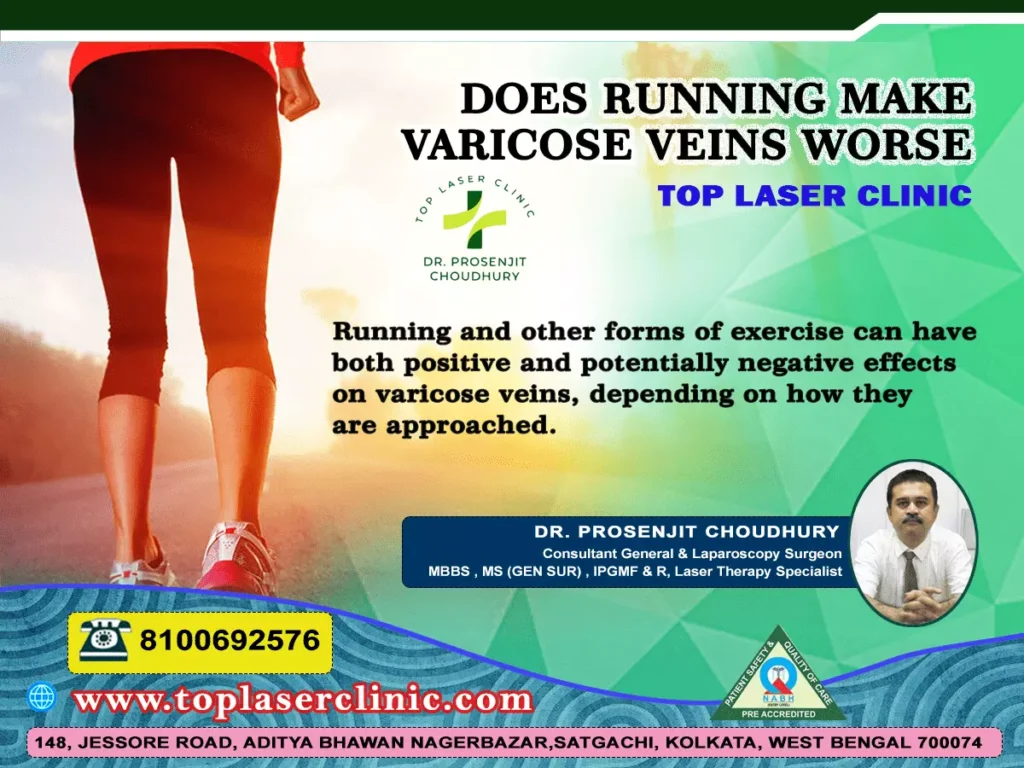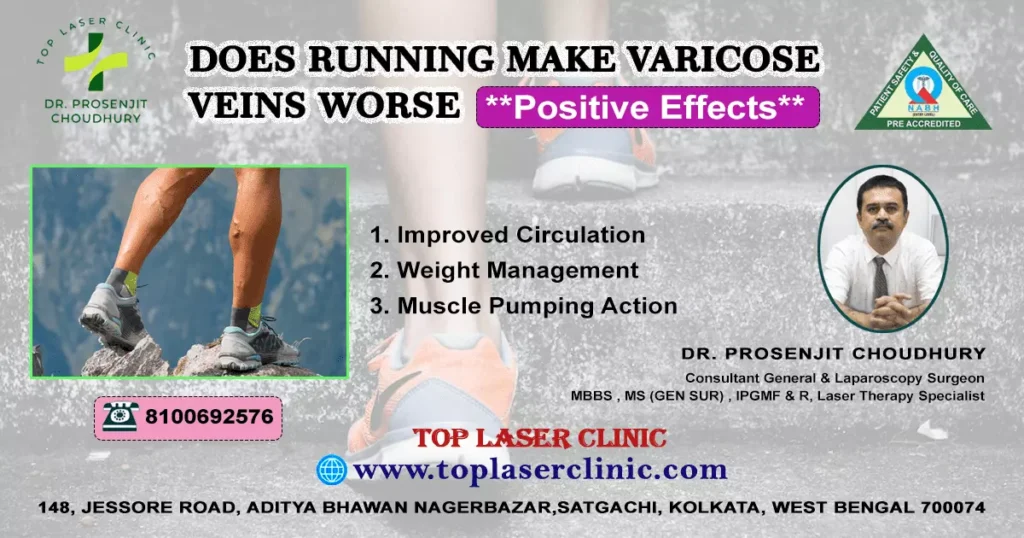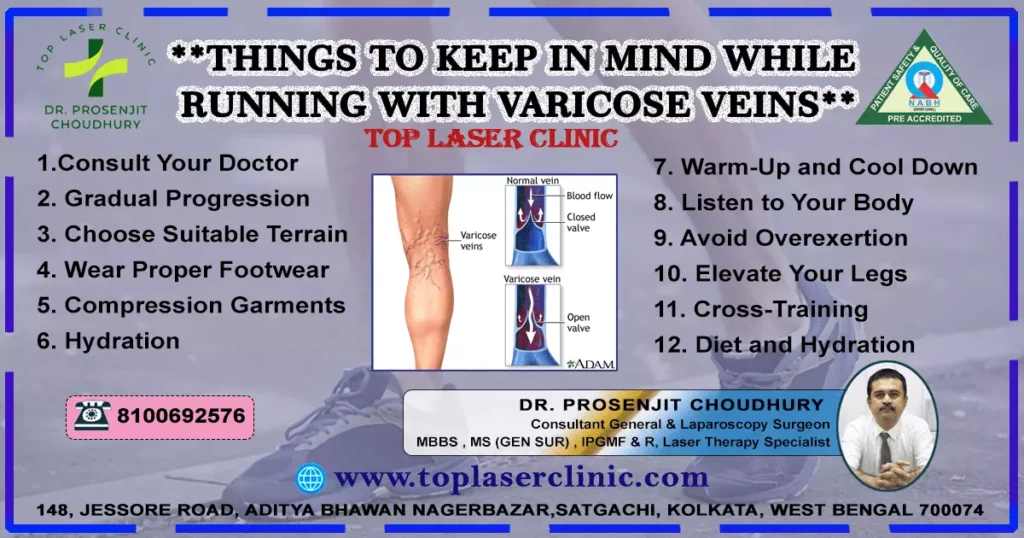
Running and other forms of exercise can have both positive and potentially negative effects on varicose veins, depending on how they are approached. Large, twisted veins known as varicose veins typically develop in the legs.
They can be caused by weakened or damaged vein walls and valves, which can lead to poor blood circulation and pooling of blood in the veins.
Here’s how exercise and running make varicose veins worse:
**Positive Effects:**

1. Improved Circulation: Engaging in regular cardiovascular exercise, such as running, can help improve overall blood circulation. This can potentially reduce the risk of blood pooling in the veins and help alleviate some discomfort associated with varicose veins.
2. Weight Management: Maintaining a healthy weight through exercise can reduce the pressure on the veins and improve blood flow.
3. Muscle Pumping Action: The contraction of muscles during running helps squeeze the veins and push blood back towards the heart, aiding in better circulation.
**Negative Effects:**
1. Increased Pressure: Intense or high-impact exercises, including running, can temporarily increase pressure in the leg veins. This increased pressure could potentially exacerbate varicose veins or cause discomfort.
2. Strain on Veins: Running on hard surfaces or with improper form may place added strain on the leg veins, potentially worsening existing varicose veins or increasing the risk of developing new ones.
Things to keep in mind while running with varicose veins
Running with varicose veins requires some special considerations to ensure you’re taking care of your overall health and well-being. While running can have benefits for circulation and overall fitness, it’s important to approach it in a way that minimises potential risks and discomfort associated with varicose veins.
Here are some things to keep in mind:

1.Consult Your Doctor:
Before starting or intensifying a running routine, consult your healthcare provider, especially if you have varicose veins. They can assess your condition and provide personalised recommendations based on your health.
2. Gradual Progression:
If you’re new to running or haven’t been active for a while, start with a gradual and gentle approach. Begin with a combination of walking and running, and gradually increase the duration and intensity of your runs.
3. Choose Suitable Terrain:
Opt for softer surfaces like grass or trails instead of hard pavement, as this can reduce the impact on your legs and minimise strain on your veins.
4. Wear Proper Footwear:
Choose supportive and well-fitting running shoes that provide cushioning and shock absorption. Proper footwear can help reduce the impact on your legs and improve overall comfort.
5. Compression Garments:
Consider wearing compression stockings or sleeves as recommended by your healthcare provider. Compression garments can help improve circulation and reduce discomfort during and after running.
6. Hydration:
Stay well-hydrated before, during, and after your runs. Proper hydration supports overall circulation and can help prevent blood from pooling in the veins.
7. Warm-Up and Cool Down:
Prior to running, engage in a proper warm-up routine that includes dynamic stretches to prepare your muscles and joints. After your run, perform static stretches to cool down and promote flexibility.
8. Listen to Your Body:
Pay attention to any signs of discomfort, pain, or swelling during or after running. If you experience these symptoms, it’s important to modify your routine, take breaks, or consult your doctor.
9. Avoid Overexertion:
Avoid excessive strain or intense activities that could worsen your varicose veins. Find a balance between pushing yourself and ensuring your safety.
10. Elevate Your Legs:
After your run, elevate your legs above heart level for a period of time to help reduce swelling and promote blood flow back to the heart.
11. Cross-Training:
Consider incorporating low-impact activities like swimming, cycling, or brisk walking into your routine to give your legs a break from high-impact running.
12. Diet and Hydration:
Maintain a balanced diet rich in nutrients that support vascular health, such as foods high in fiber, antioxidants, and healthy fats. Adequate hydration is also important for maintaining good circulation.
Remember, your individual situation may vary, and it’s crucial to prioritise your health and comfort. If you have concerns about running with varicose veins, consult your healthcare provider for personalised advice and recommendations.Remember, while exercise can play a role in managing varicose veins, it’s just one aspect. Lifestyle changes, dietary adjustments, and medical treatments may also be recommended by a healthcare professional to effectively address varicose veins.
GOOD